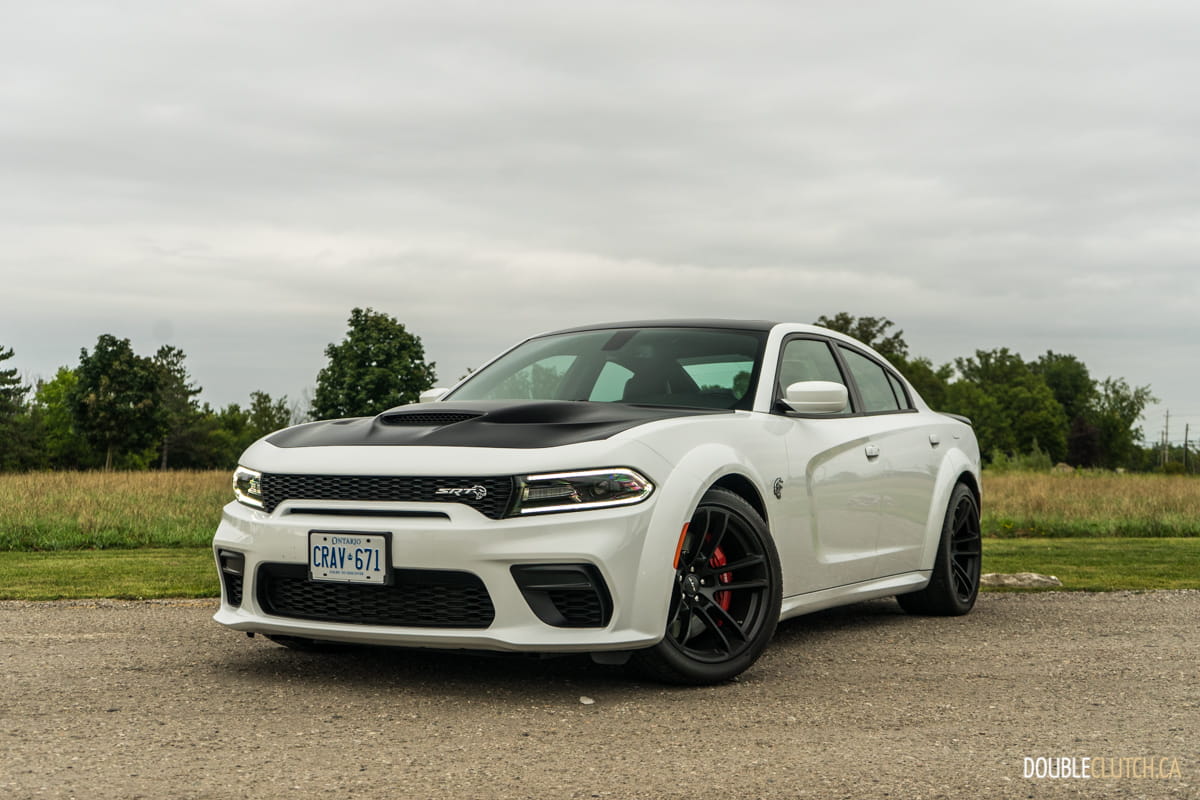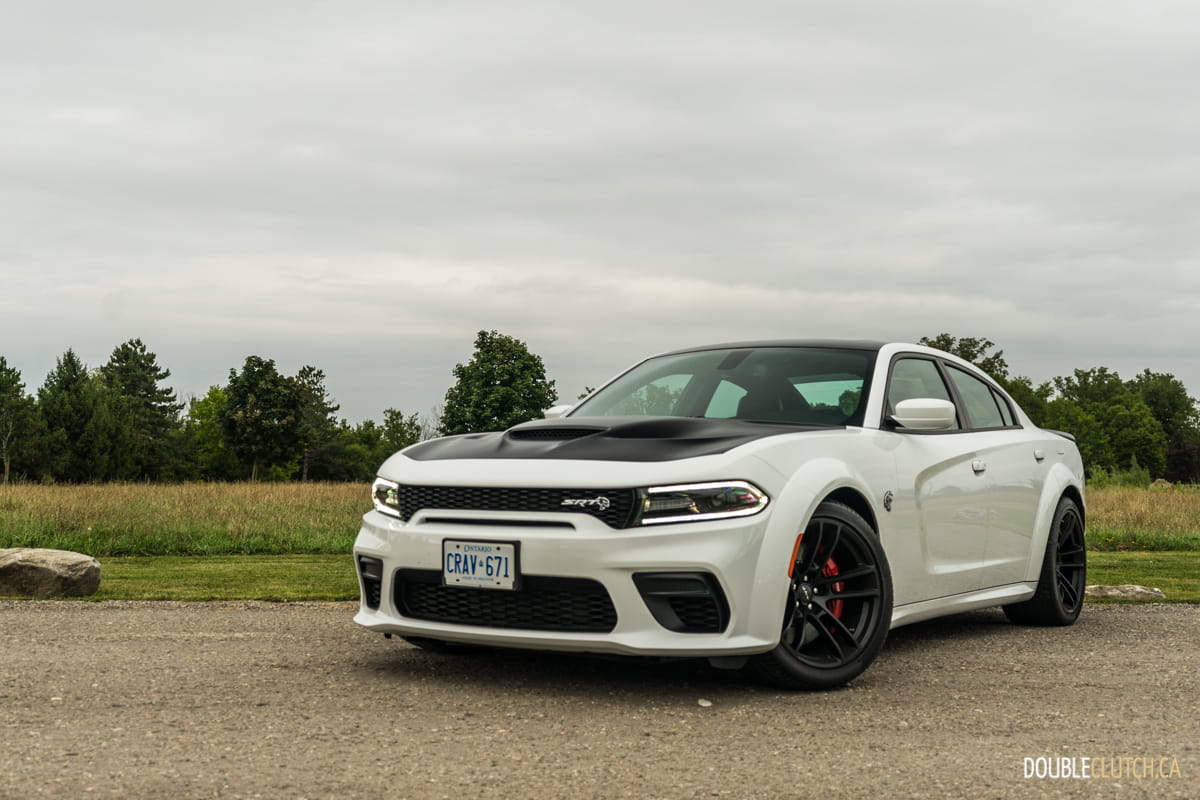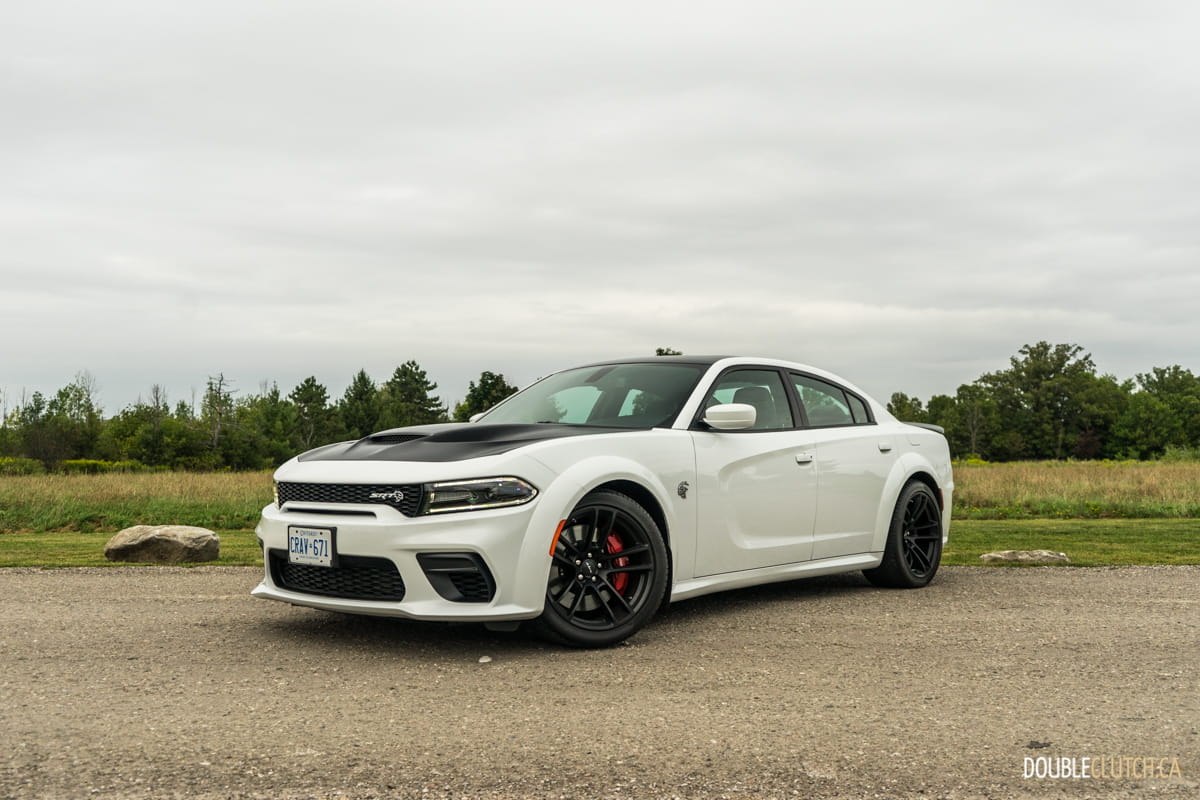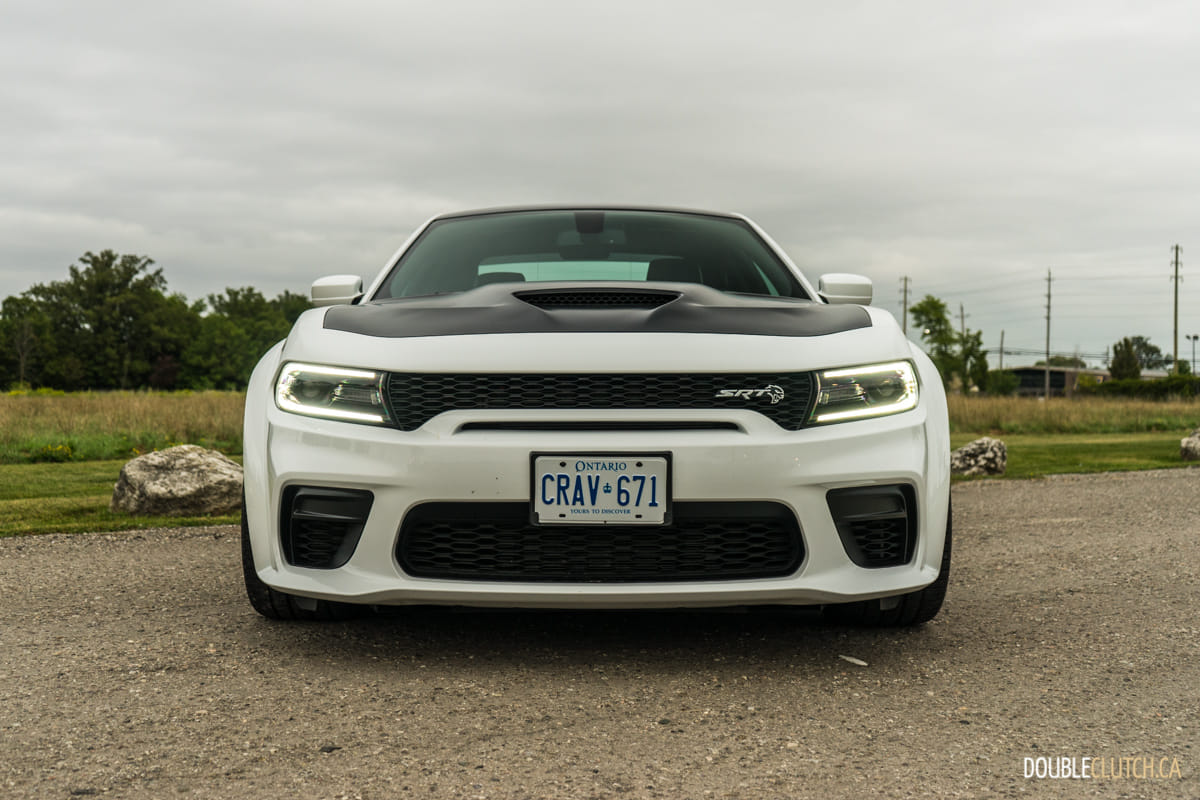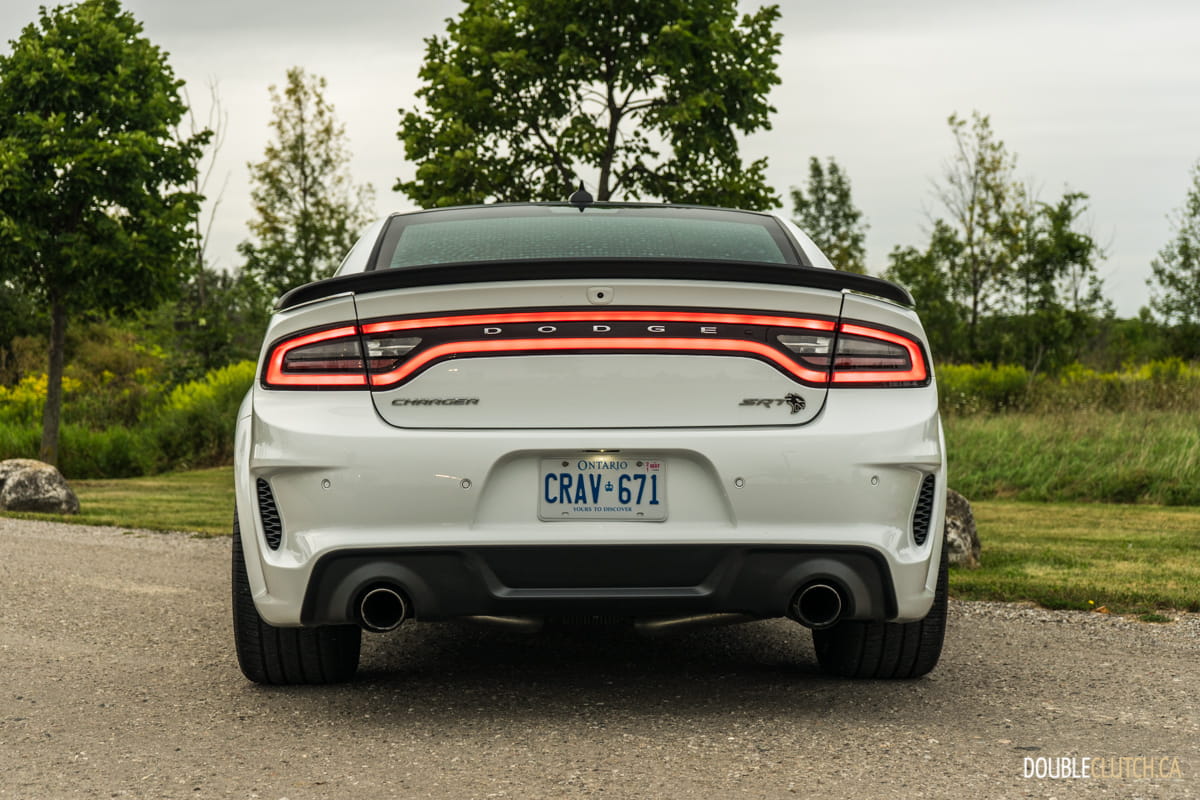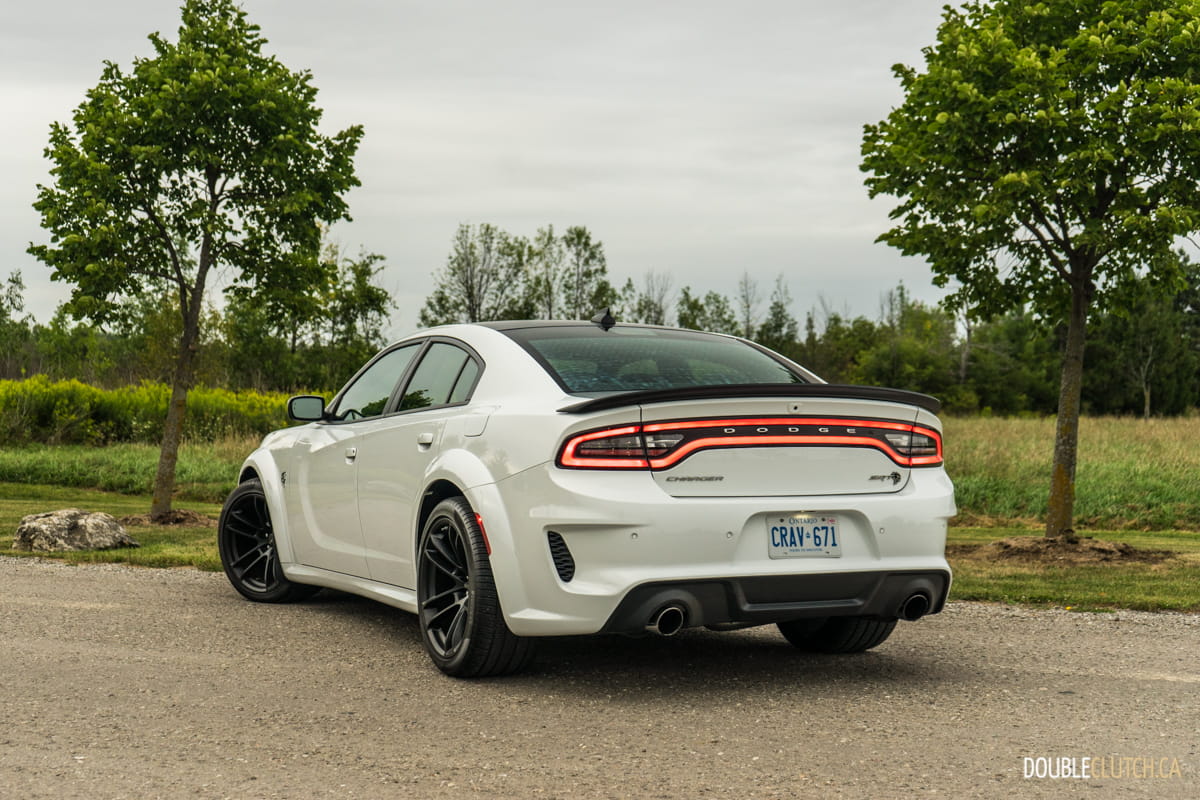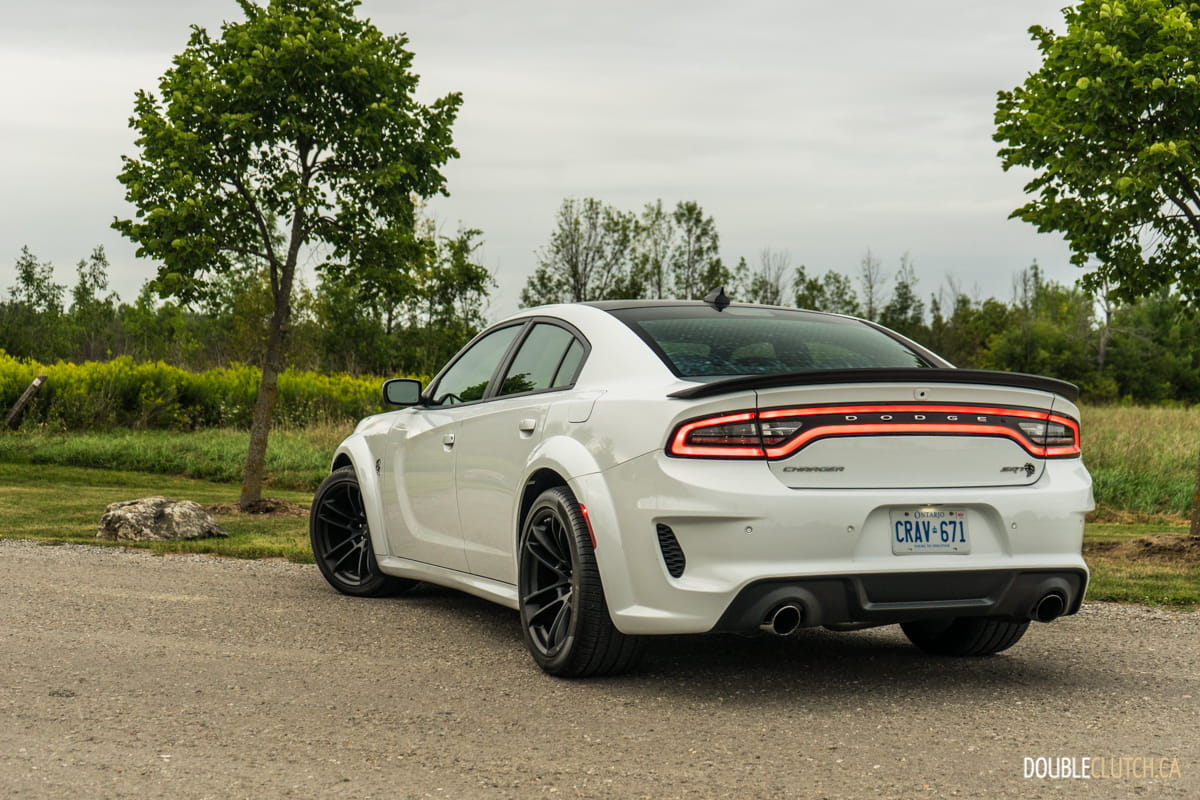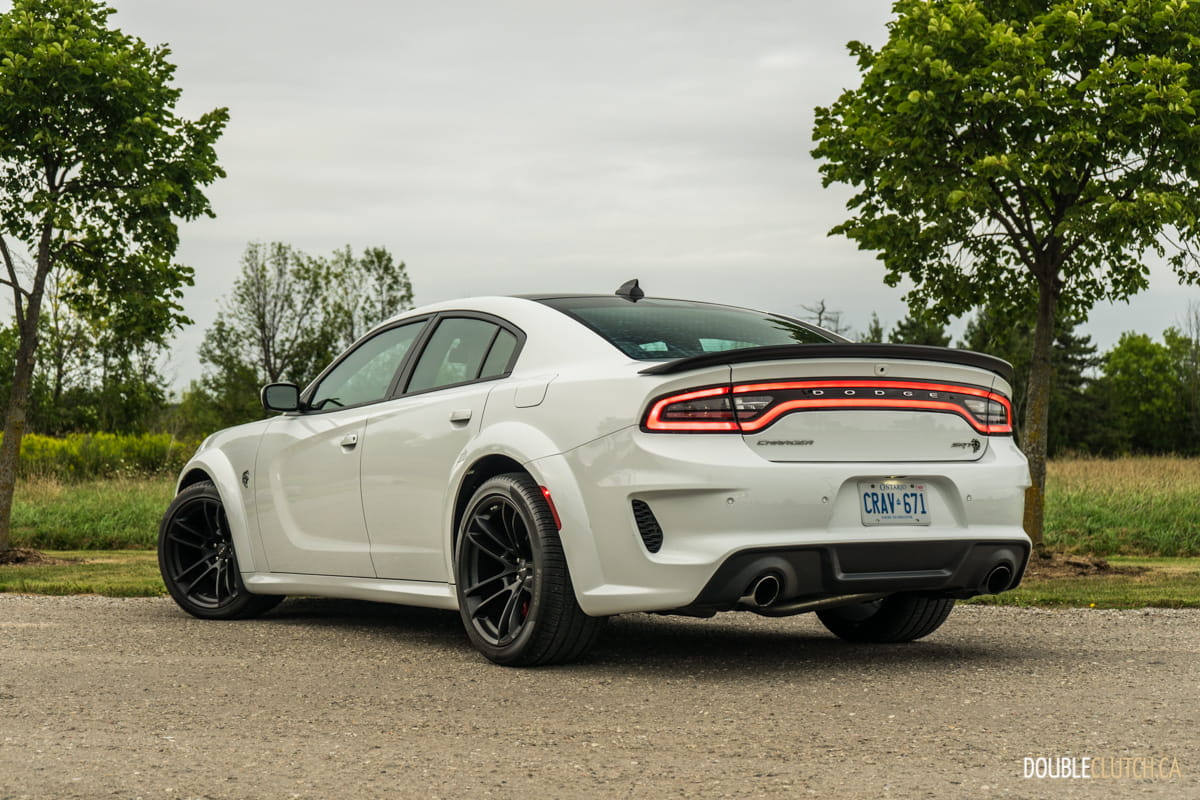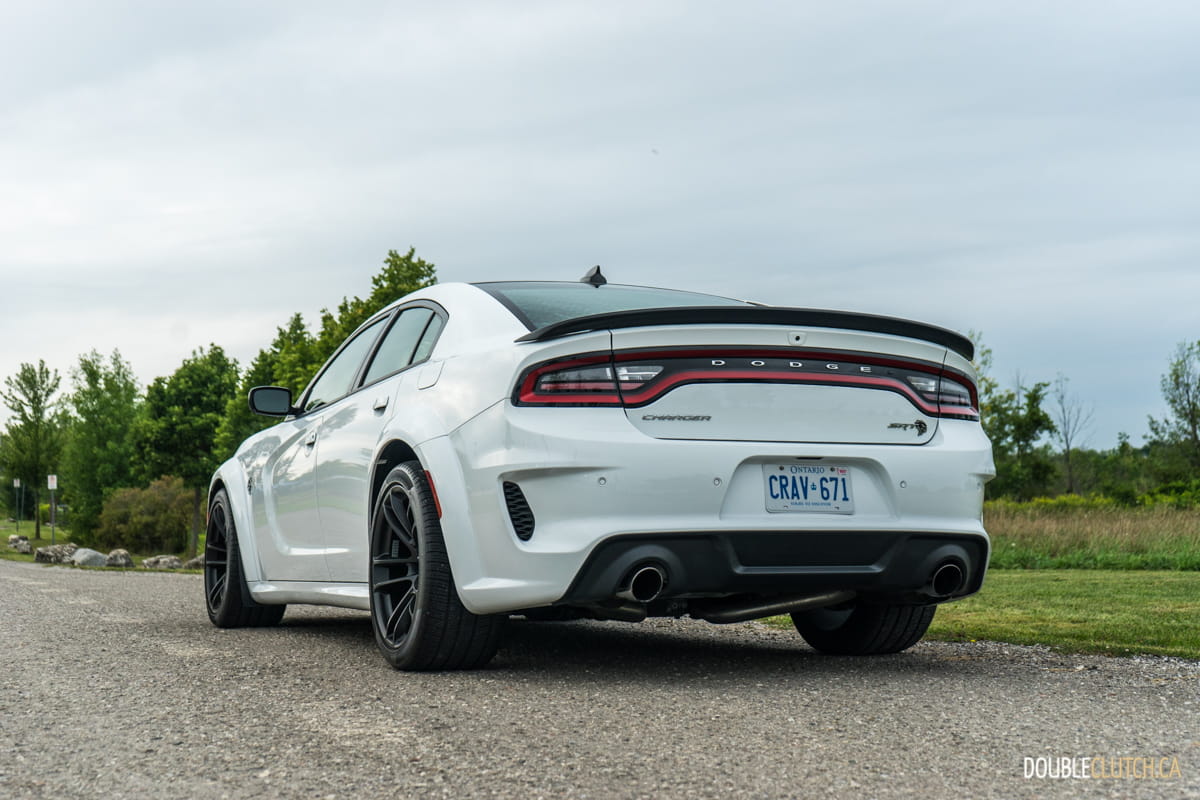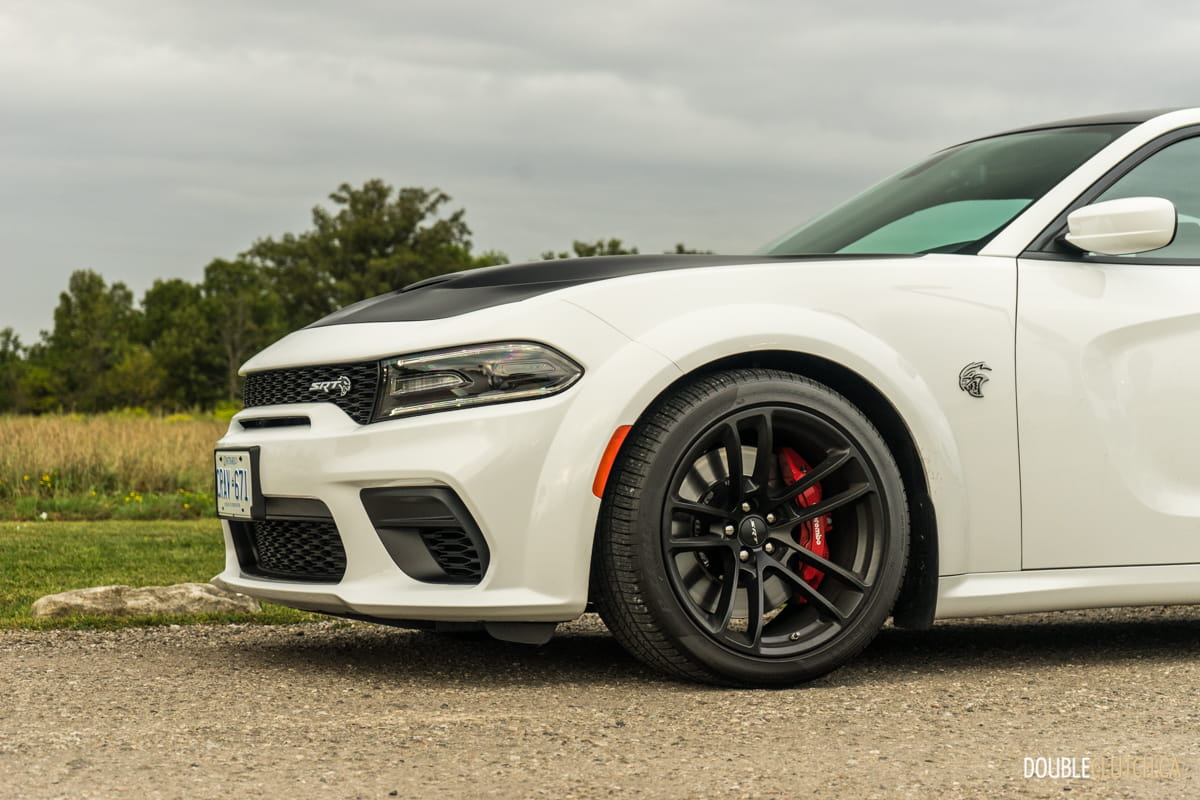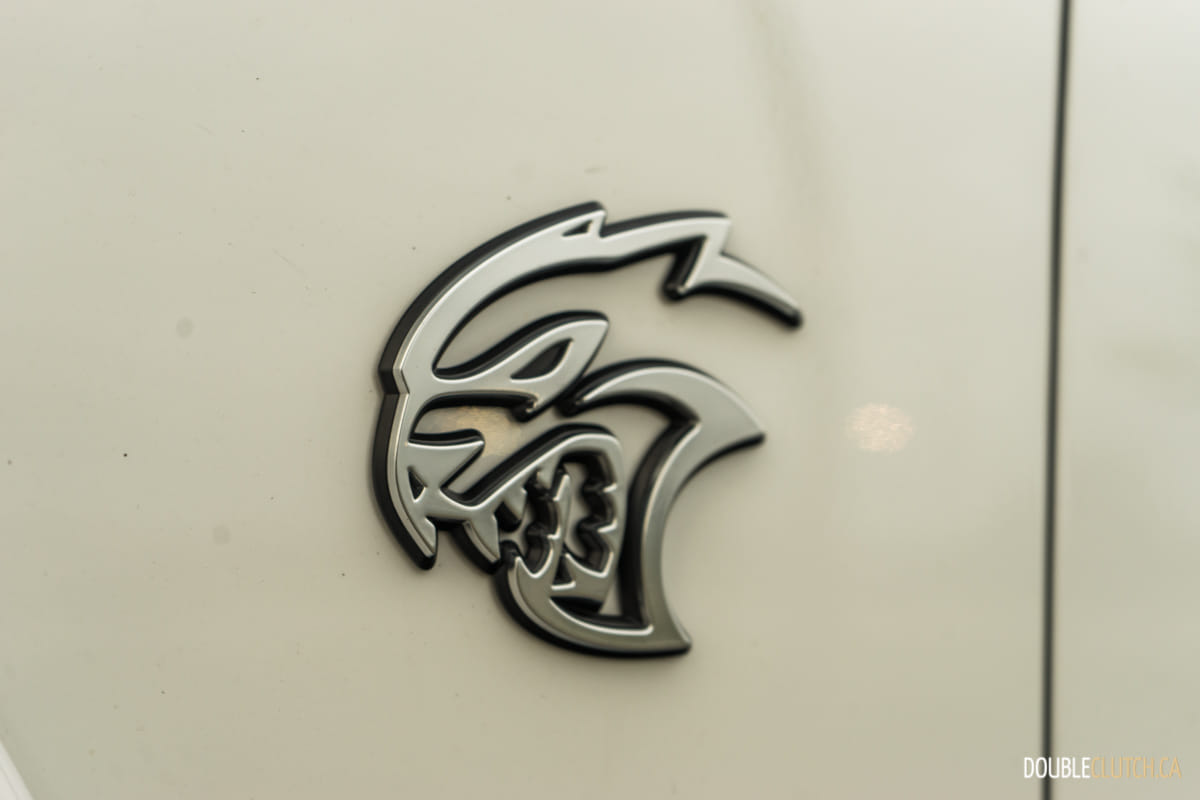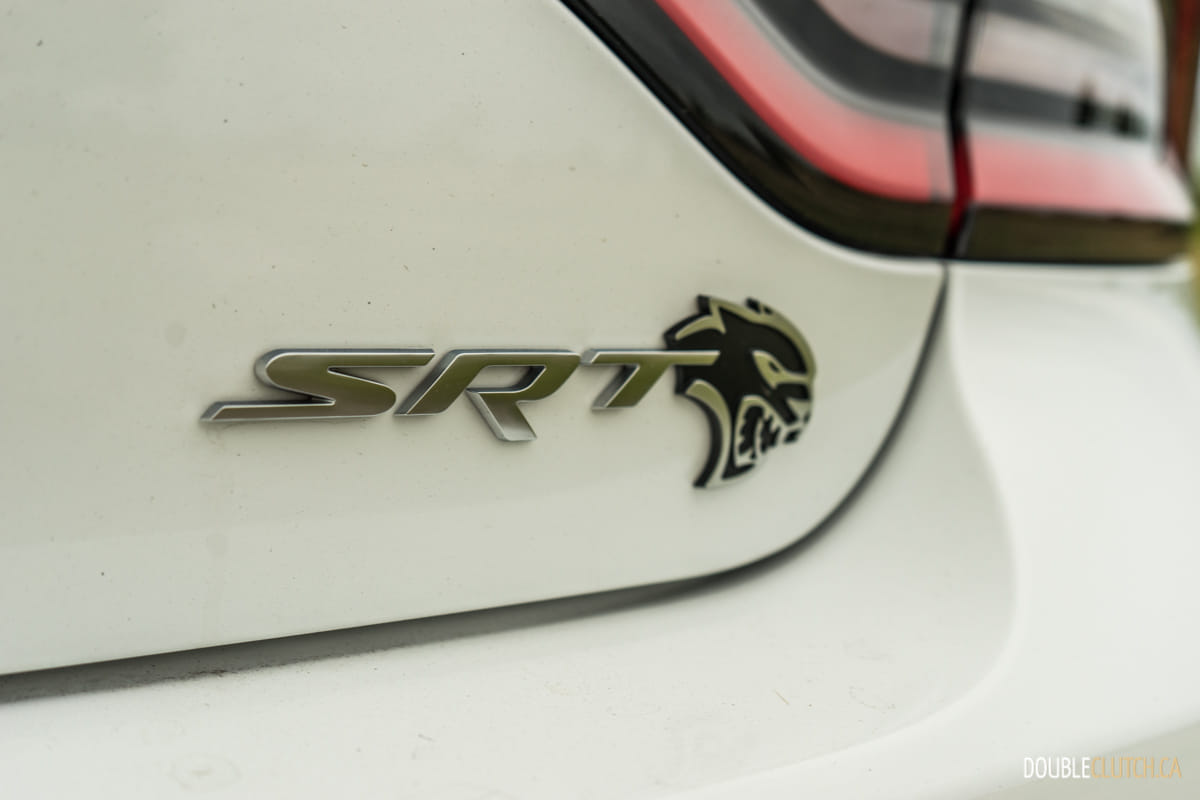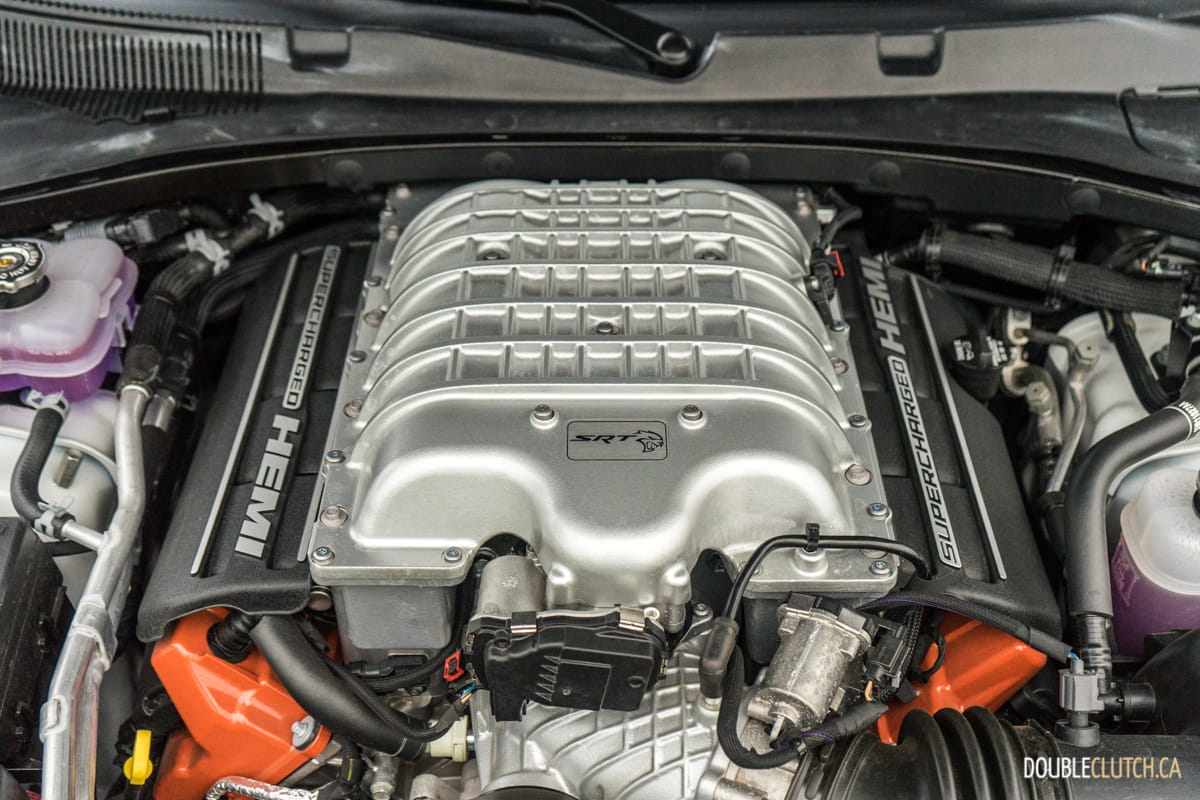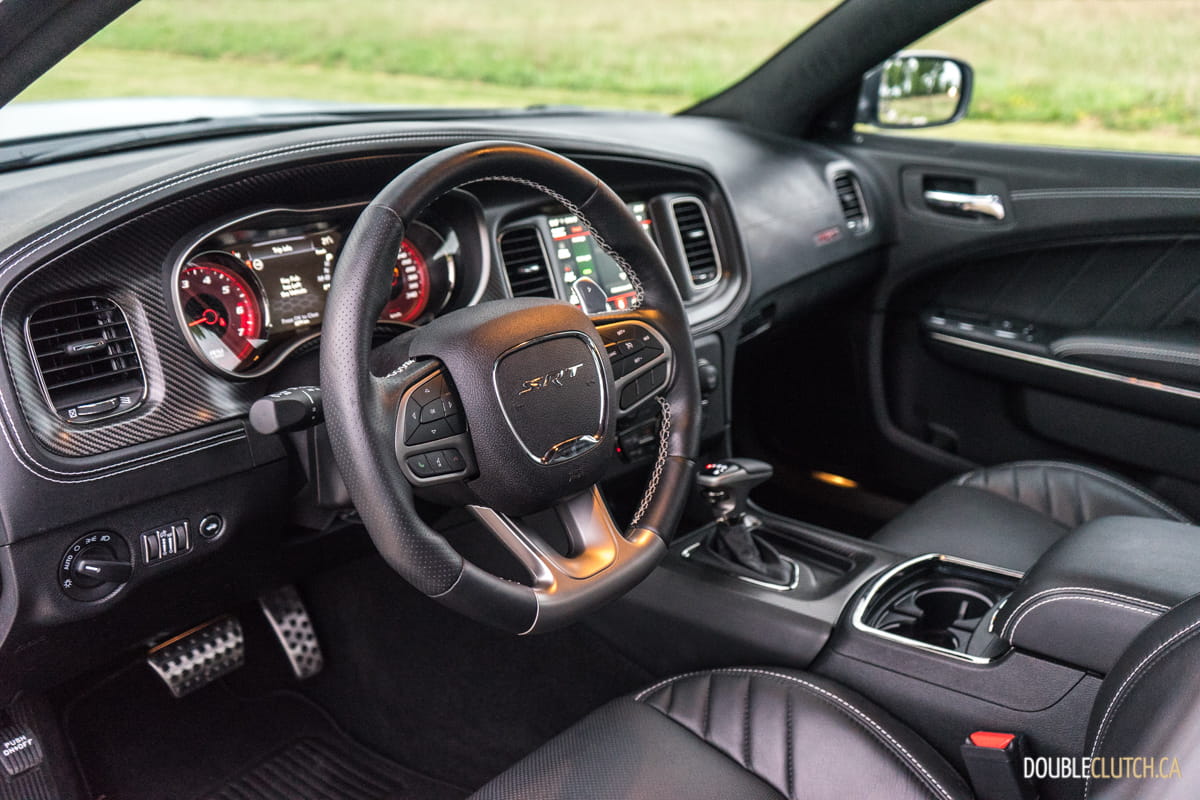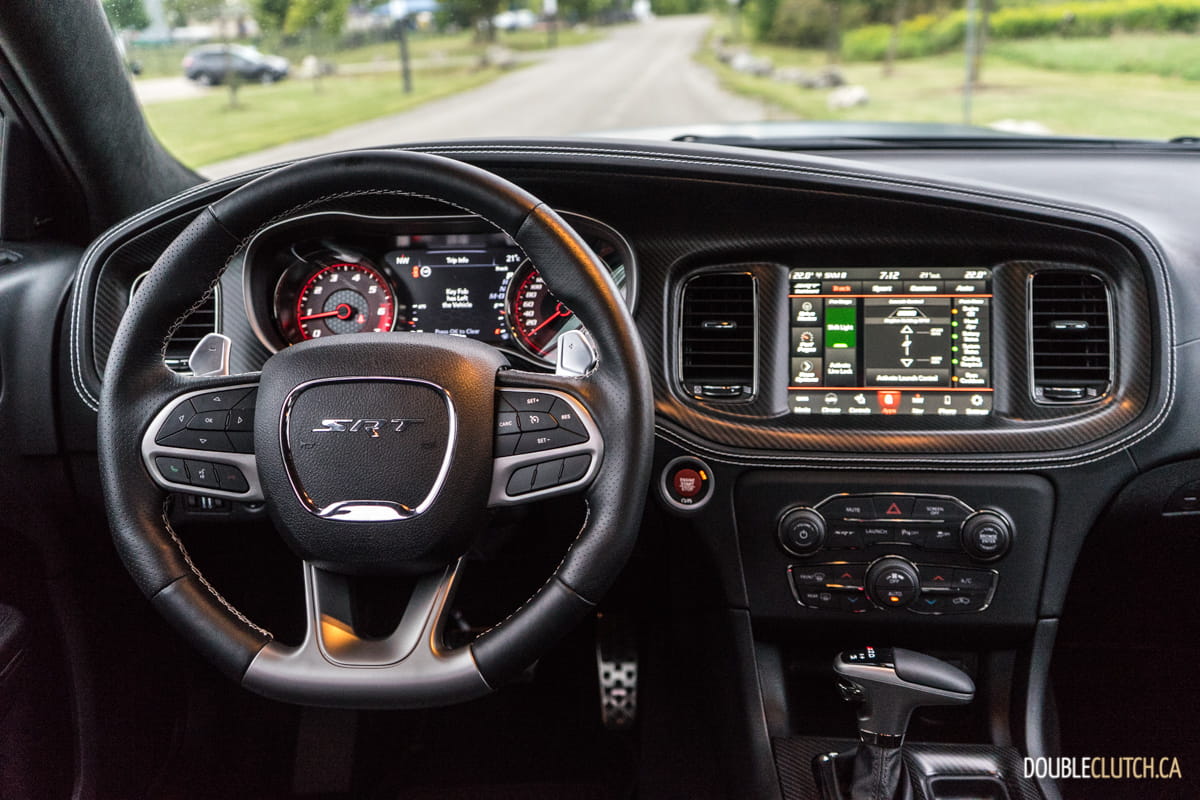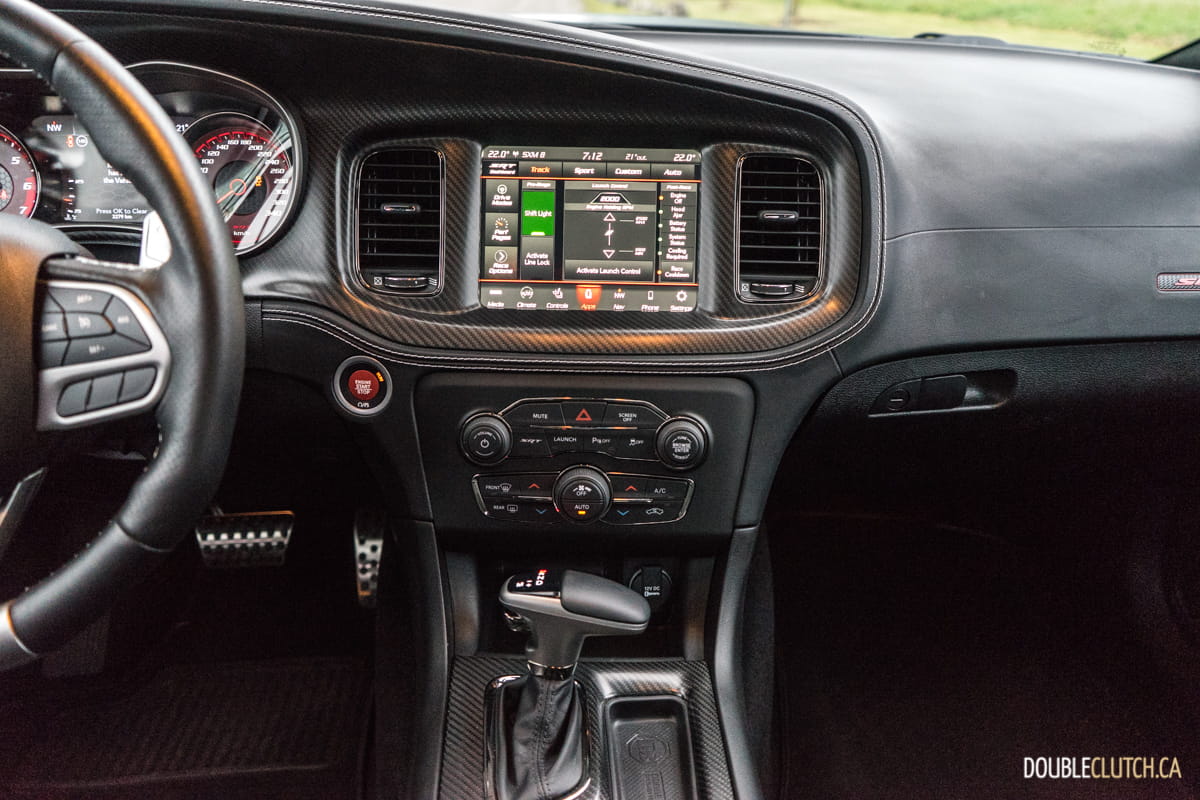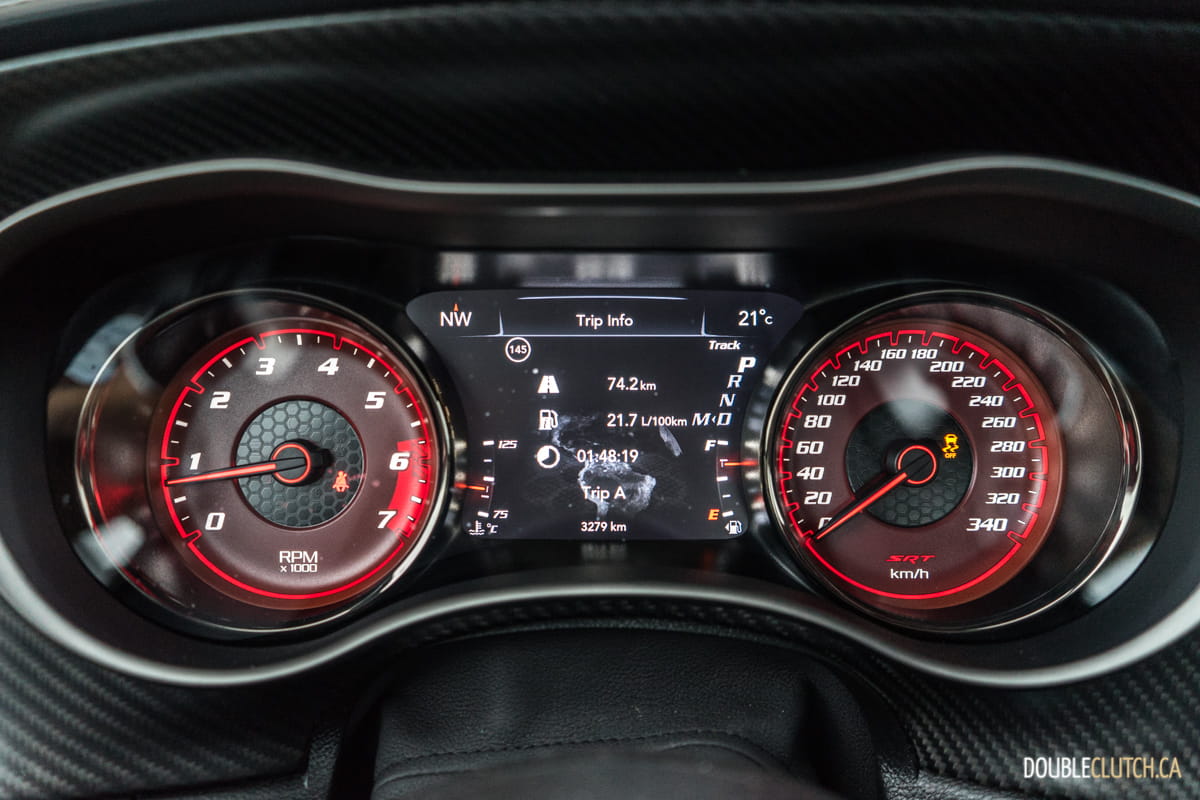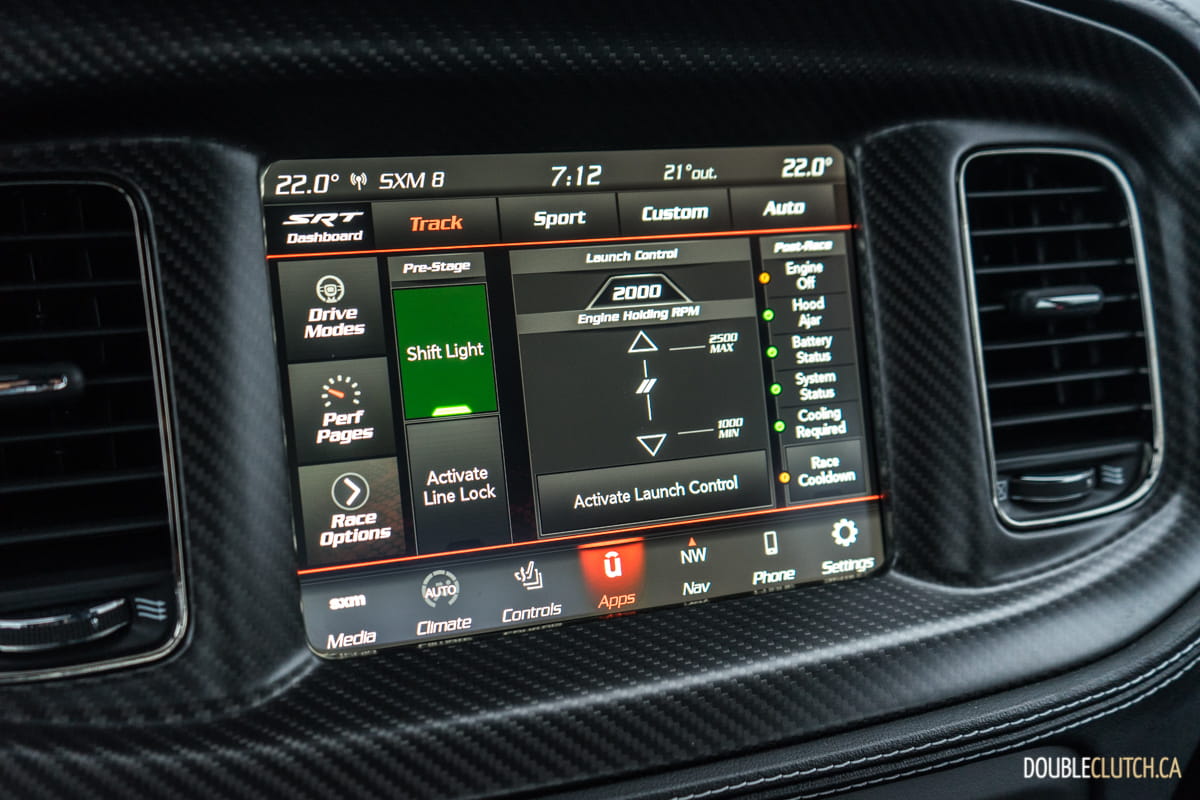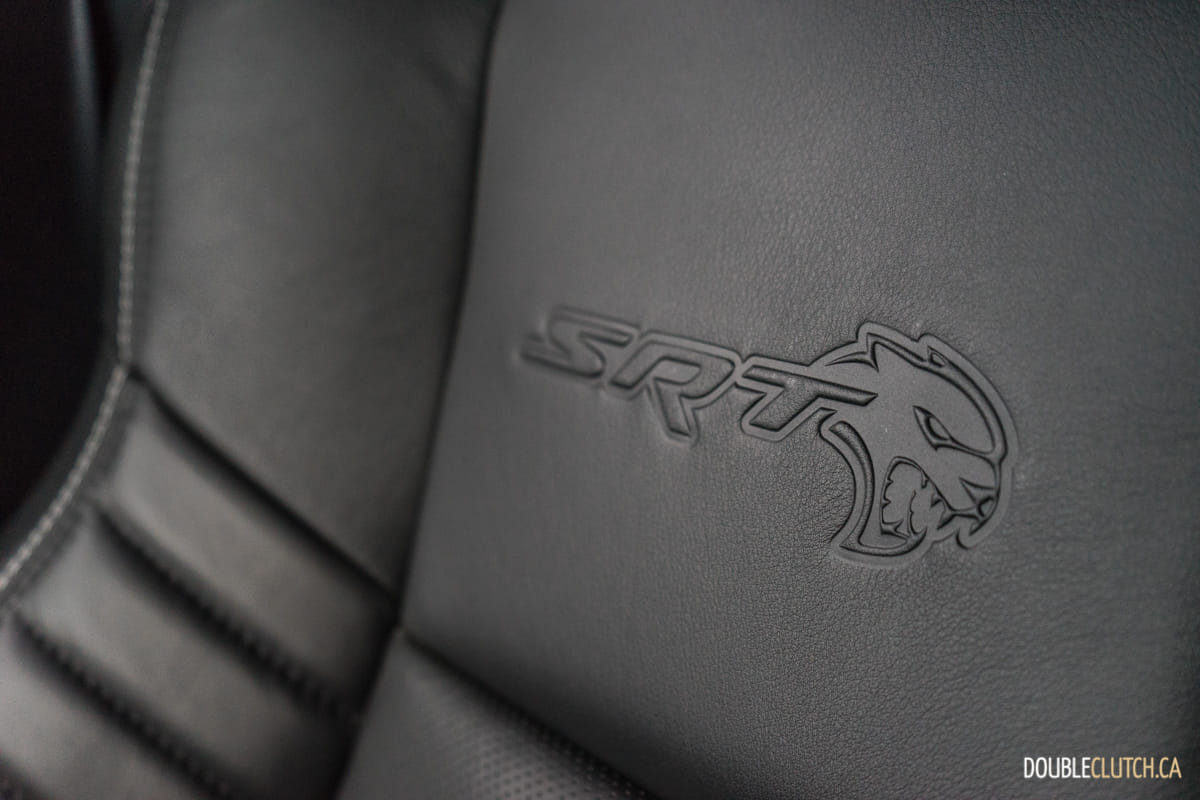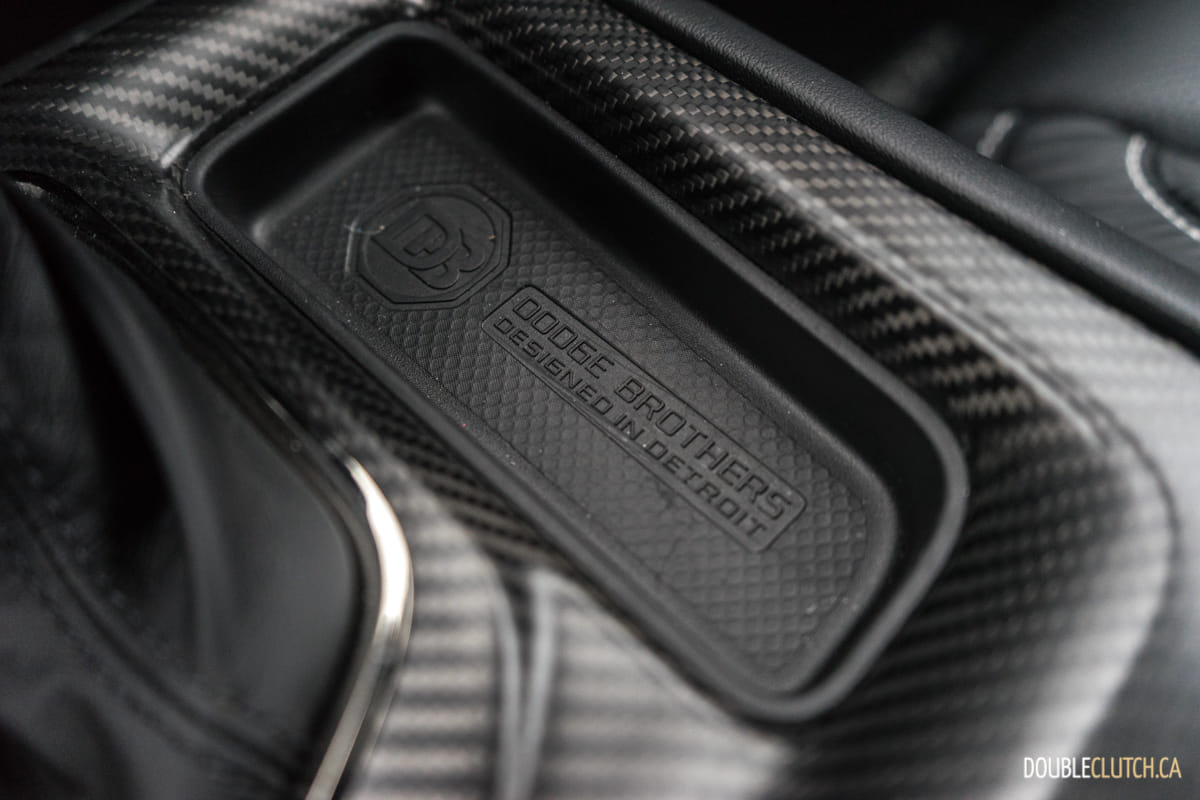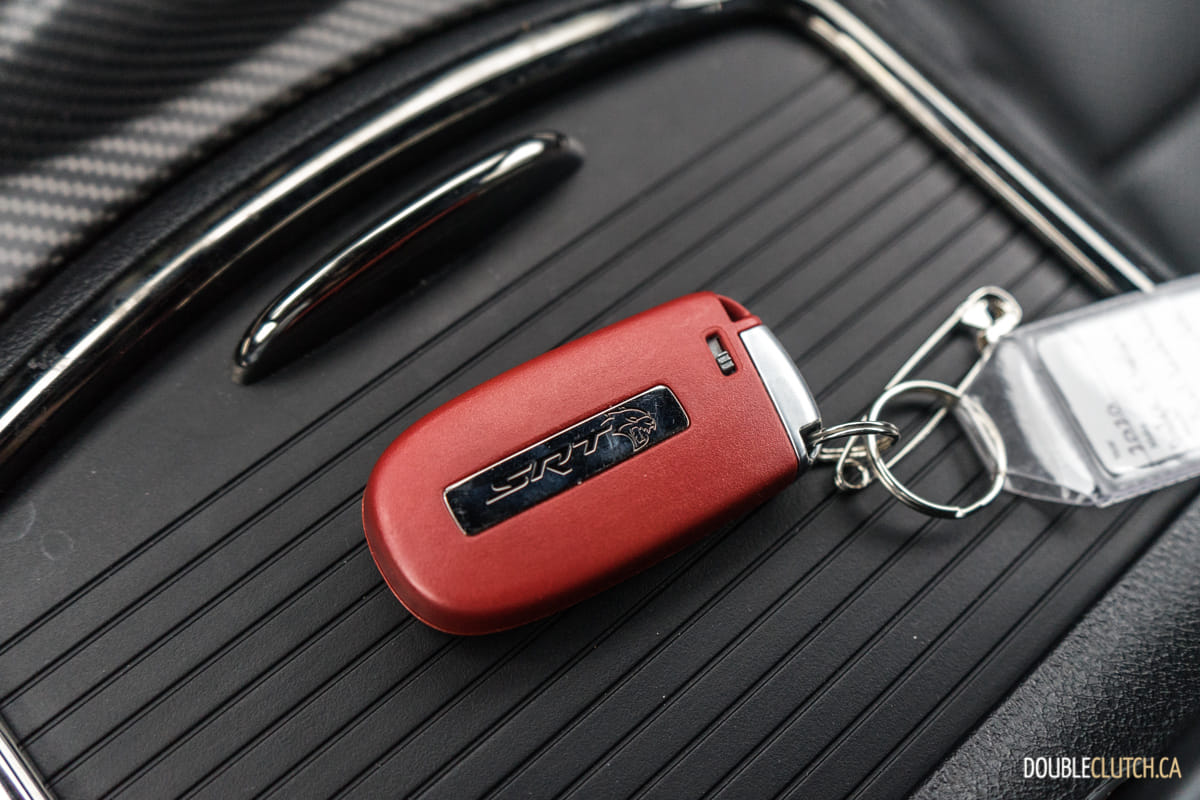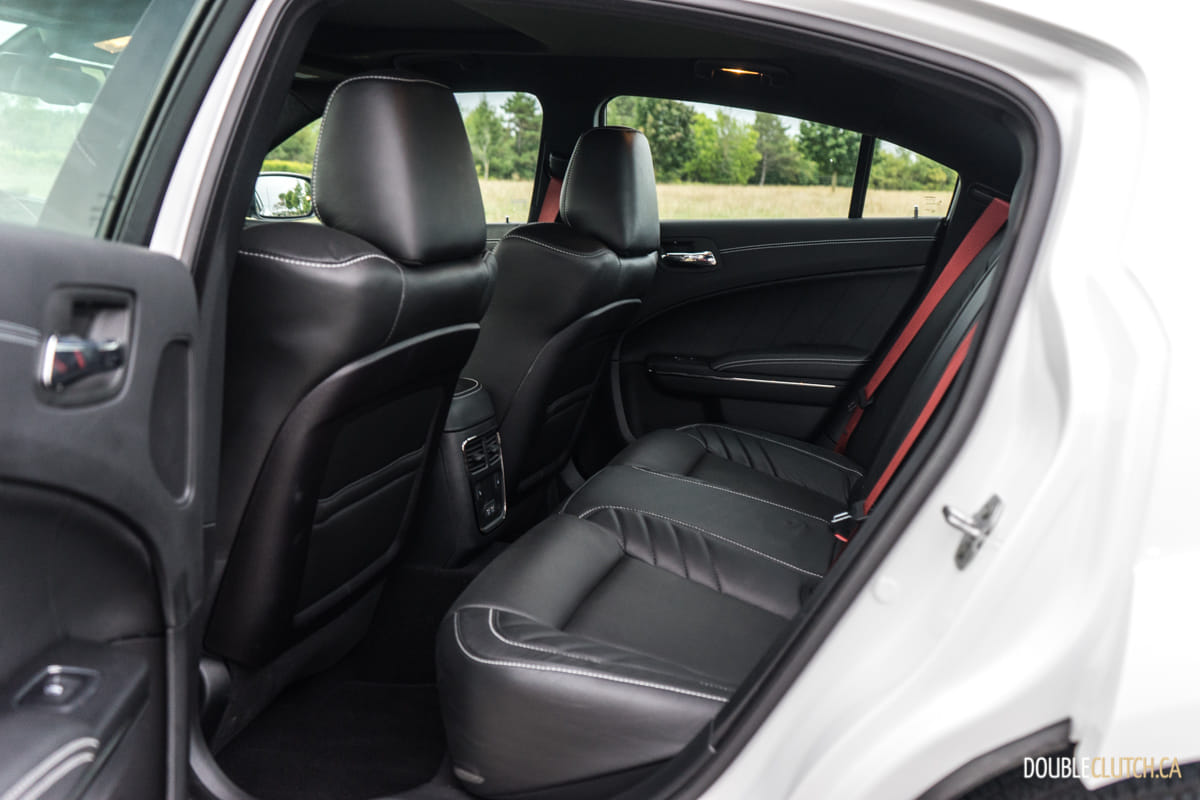Fiat-Chrysler’s SRT Performance division has huge waves in the car enthusiast community worldwide when they launched the ludicrous Hellcat variants of the Challenger and Charger, establishing the cars as the standard for modern American muscle. Five years later, this 2020 Dodge Charger SRT Hellcat still holds the claim as the world’s fastest and most powerful sedan. To make sure that it keeps instilling fear into just about anything else on the road, for 2020 the Charger has been updated with a new Widebody design and some mechanical upgrades to back up its bold looks.
Maybe bold is a bit of an understatement here; the Charger Hellcat was always a very aggressive car. The new 3.5-inch fender flares and deep dish wheels take aggressive to a new level. The Charger Widebody is absolutely sinister looking. It’s loud, proud and unapologetic, and it can be because it has the metal to back it all up. The wide fenders barely hide 305/35R20 Pirelli P-Zeros (all seasons – summers are optional and highly recommended) and behind them are six-piston Brembo calipers and massive 391mm rotors up front with a matching four-piston 350mm rear combo. Keep digging and you’ll find new three-mode Bilstein shocks, stiffer springs, beefier sway bars, and a revised power steering rack.
Aside from giving the Charger Hellcat a fresh and wilder look, these upgrades are the real deal, and deliver a noticeable increase in lateral grip compared to the now discontinued narrow body Charger. You still need to treat the gas pedal with the utmost of respect to keep the Hellcat pointed where you want it to, but these upgrades mean that it’s more composed and easier to manage when straight roads turn curvy.
Don’t get me wrong though, if all you’re interested in doing with your Hellcat is smoky burnouts and stoplight launches, there’s still plenty of power here to effortlessly light up the Pirellis with little more than a tap of the throttle. The SRT stability control system is fairly lenient and even in Street setting will allow for plenty of wheel spin off the line before interfering. If you’d rather just get going in a hurry there is an assisted launch mode. Pushing a button and following the on-screen instructions will have you launching the car at around 2,000RPM, and if those massive tires are able to get any grip you’ll rocket to 100km/h in a reported 3.6 seconds.
All of this is powered by the now legendary, 6.2-liter supercharged HEMI SRT V8 and its dominating 707 horsepower and ground-shaking 650 lb-ft. of torque available at 4,800RPM. The engine is a work of art not only for its output, but for the glorious sounds that it makes. The Hellcat V8 is, by a wide margin, the single most aggressive modern engine on the street. A thunderous growl through the exhaust is only matched by the distinctive high-pitched whine from the supercharger – there is nothing like it. The power is harnessed by the ZF built eight-speed Torqueflite automatic transmission, and while we miss the six-speed manual in the Challenger there is no denying that the automatic gets the job done quicker than any human could.
The Charger Hellcat itself does a bit of double duty. It’s a responsive track-ready monster when you push the right button with lighting quick throttle response and enough power to push your testes up into your chest if you’re brave enough. However, if you’re just cruising along, it’s a functional family sedan, roomy and reasonably isolating. The electric steering is well weighted, but does not communicate your grip on the road, which is a little troublesome on a performance car like this. The brakes are firm and grippy, which is exactly the sort of confidence needed. Ride quality is surprising good, especially in Street mode where this Charger rides only slightly bouncier than its non-Hellcat counterparts, and even with the suspension in Sport mode, the ride is not punishing by any means.
The Charger’s biggest differentiator compared to nearly anything else on the road capable of similar performance is the fact that it is a proper family sedan. Like a good full-sized American sedan should, the interior offers huge amounts of space for passengers and a very generous trunk. My two-year old’s car seat easily fit into the rear of the Charger with plenty of room to spare – and he loved the ride. Up front there is plenty of handy storage, and comfy heavily bolstered Laguna leather ventilated seats. Outside of the seats and an SRT flatbottom steering wheel, there isn’t much inside to differentiate it from a standard Charger.
One can get into a basic Charger for under $40,000, so the general levels of interior refinement and material quality reflect that price point. It’s still a nice place to spend time, but it’s not an interior reflective of the $84,345 base price for the Hellcat. The door panels and dash are covered in a shiny rubber-like material that is in stark contrast to the optional suede headliner in our tester. The layout is simple and clean, as are the controls. Of course, if you don’t want just anyone jumping into your 700+ horsepower car, there is a black key (as opposed to the red key) which limits the power to a more reasonable (Ha!) 500 horsepower.
The Charger Hellcat certainly isn’t a cheap car, but if you consider its outright performance, it would be nearly impossible to find comparable today for under $100,000. As noted earlier, the basic Charger Hellcat Widebody starts at $84,345; and there is a good list of options available. Our tester got the Carbon and Suede interior package ($1,495), the Power Convenience Group ($600), the Navigation and Travel Group ($770), a larger 8.4-inch Uconnect touchscreen, and more.
It also had a $1,900 Harman/Kardon 19-speaker stereo, power sunroof ($1,425), and a costly ($5,200) satin black graphics package which I would certainly forego. All of this pushed our as tested price to $99,155 – just under that critical fix-figure mark. Funny enough, Dodge has an employee pricing event running at the time of writing which would save Canadian buyers about $6,000 on a Hellcat. Oh yeah, and 18.5L/100km is the “efficiency” figure, and it runs 91-octane premium fuel as an absolute minimum.
There are very, very few cars like this out there, and that’s what makes the Hellcat so appealing. You can find plenty of fast cars, but nothing else quite as overwhelmingly powerful as this with the size, relatively comfort, and affordability. The improvements for 2020 just make a great car even better, and while its el-cheapo interior and dead steering make it less than perfect, they also add character to a car that is already overflowing with charisma. Just like the muscle cars of the 60s and early 70s disappeared from showrooms, this 2020 Dodge Charger SRT Hellcat won’t be with us forever, so get one while you can.
See Also:
2019 Dodge Challenger SRT Hellcat Redeye






